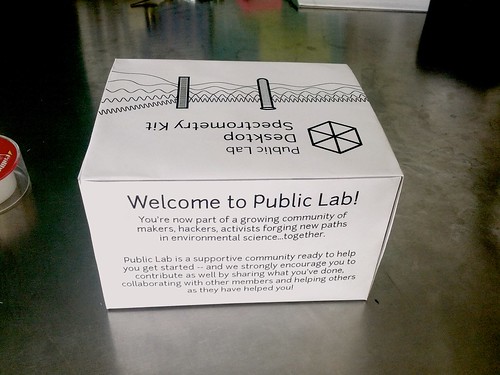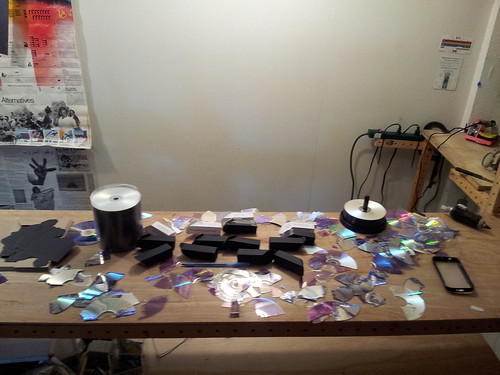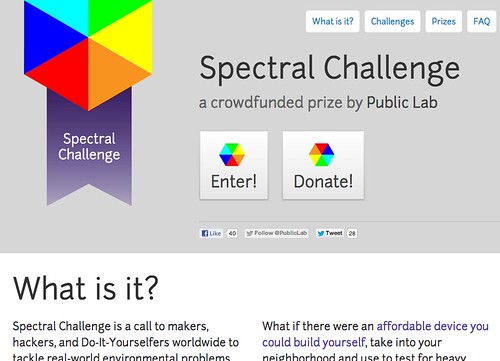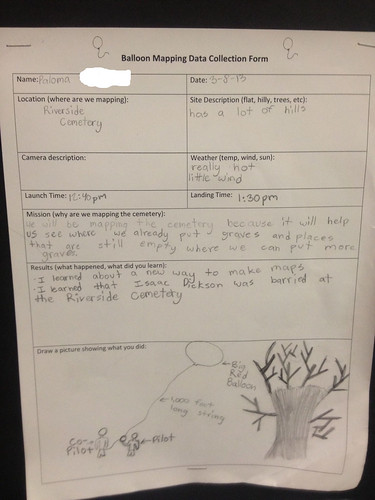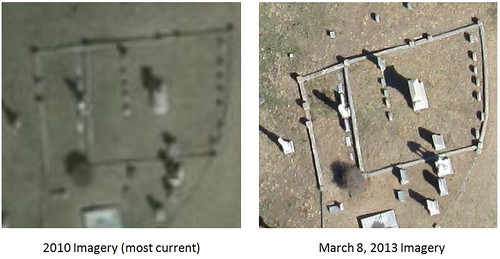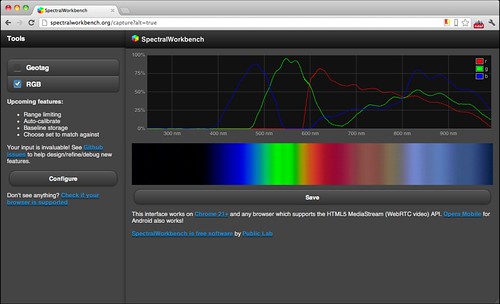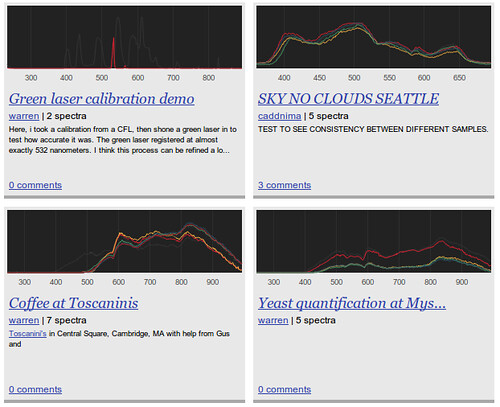Idealab Blog

Public Lab focuses on open science education at 2013 barnraising
Cross-posted from PBS IdeaLab blog
Co-authored by Shannon Dosemagen, Jessi Breen and Liz Barry
This year’s Public Lab Barnraising brought 50 people together in Louisiana for our annual, retreat-style community gathering. This is the closest thing we have to a Public Lab conference — but with an emphasis on “doing stuff together” rather than just presenting/talking. In the spirit of bringing a community together to collectively raise a structure such as a barn, Public Lab comes together in-person to develop tools, toolkits, supporting materials such as guides and tutorials, test the tools, and develop new research directions and projects. Participants represent a wide range of interests, from technologists and designers to social scientists and community organizers. As we prepared for the 2013 barnraising, we all crossed our fingers that we’d be storm free between the East and Gulf Coasts, unlike last year when Hurricane Sandy disrupted many travelers. However, we weren’t so lucky!
On October 3, with community members already in the air en route to New Orleans, we received news from LUMCON (the research center on the Gulf Coast where we would be lodging, meeting, and conducting research) that they were facing a potential 2-3 foot storm surge from Tropical Storm Karen and would be shutting their entire facility down and canceling our conference. Panic ensued, but only briefly. With some quick work and kind hearts, within a couple of hours gracious hospitality was offered to us by University of New Orleans TRAC and Propeller co-working space who agreed to house and host barnraisers joining us from as far away as Jerusalem and London.
Exploring Education
And so we convened. Following time-tested principles of Open Space Technology, the group gathered to explore this year’s theme of education. We proposed sessions that would enable us to arrive at the end of our time together with a workable plan for supporting education initiatives in the coming year. Some plenaries were agreed upon in advance — for instance, we reserved an entire morning to discuss our diverse community’s ethics of practice and to collaboratively write our value statement where we each contributed statements in the form of, “as a member of the Public Lab community I value …”
We also reserved afternoons for outdoor field trips, weather permitting, and the hands-on kite flying took advantage of the pre-tropical storm winds. Back indoors, breakout sessions ranged from mini-hacking sessions on ongoing projects like the thermal temperature bob (tested in a bathtub) and potentiostats, to discussions on structuring Public Lab tool workshops using dialogue education techniques.
Much progress was made by a dedicated group of teachers working to connect Public lab activities with U.S. federal standards for kindergarten-12th grade core curriculum. The diversity of sessions was representative of the diversity of individuals attending the barnraising — practitioners, NGO workers, journalists, activists, academics, designers, teachers.

Throughout the three-day conference, the rhythm pulsed between plenary sessions attended by all to small group breakouts for getting work done, which kept the group fresh and productive. The “Rule of Two Feet” governed; as stated by Harrison Owen, “If at any time during our time together you find yourself in any situation where you are neither learning nor contributing, use your two feet, go someplace else.” The spirit of “Be Prepared to Be Surprised” infused our encounters with open mindedness. Each session had a note taker using the “Talk” page (etherpad) of the relevant Public Lab wiki page. All notes and photo/video documentation were gathered here.
We wrapped up our third and final day together by listing out the outcomes of all sessions and the commitments made by individuals and Working Groups. There is now a Writing Group, a Water Quality Group, and a revamped Education group specifically working towards adapting Public Lab tools to integrate with the U.S. science education standards and generate “hello world” type experiments for use in the classroom. New community members joined the Public Lab organizers, a group of nominated community leaders who meet weekly and guide the way our community collaborates and grows.
The Open Space Technology Experience
It is worth noting that contemporary unconferences in the tech world employ some but not all of the principles of open space technology. In an open space technology experience, people work towards solving a problem or answering a question in the context of complexity and diversity. This stands in contrast to standard tech world “birds of a feather” meetings, which emphasize homogeneity and breakout sessions featuring uni-directional presentations. In open space technology, everyone tackles issues that are part of the same overarching issue. Open space technology emphasizes not only setting the agenda, but within each session, collaborating on the shared goals that were established at outset. It’s about getting work done together.
We are already planning for next year’s barnraising. We are committed to gathering in the Gulf Coast, and have accepted the fact that once again we will likely have to call it a hurricane party!
The 2013 Barnraising was sponsored with generous support from Rackspace and the John S. and James L. Knight Foundation.
Follow related tags:
gulf-coast education idealab barnraising

'Detritivore' Design: How to Use Trash to Create Scalable Tech Solutions
 Scarabaeus laticollis via Wikimedia.
Scarabaeus laticollis via Wikimedia.
Detritivores are creatures that consume decaying matter. Detritivore designs use abundant waste products to make scalable technology solutions. Unlike loftier concepts of zero-waste design such as Cradle to Cradle, Detritivore design accepts that the world is already loaded with discarded and broken technology. Detritivore designers need not create a recyclable or even non-toxic product, since the materials already exist -- we merely try to squeeze out whatever functionality objects may have left.
The Public Lab Spectrometry Kit is a detritivore design. It consumes waste products and uses them to search for other, more dangerous wastes. Pipe cutoffs, obsolete webcams, and optical discs are sufficient to make a functioning spectrometer. The central component, the diffraction grating, is made from CDs and DVDs, disposable media with extremely precise grooves. Long after the media written onto these discs decays into illegibility, they will still function as diffraction gratings, splitting light into a rainbow that can be quantified and used for material identification.
spectroscopy with consumer detritus
We've made spectrometer plans, sell kits, and have created Spectral Challenge an X-Prize-style competition to identify environmental contaminants. We are dedicated to this project's continuity, but with over 200 billion CDs and over 1 billion DVD players in the world, it is unlikely that we will ever run out of hardware. Our design patterns ensure that optical disc spectrometry can outlast any one project or manufacturer.

There are commercial diffraction gratings that we could use, and they would simplify the construction of our retail kits a little bit, but they wouldn't significantly increase the accuracy of our device. Doing spectroscopy with consumer detritus is more important to our scientific program than simplifying our kits. We mail kits around the globe, but mail can't reach all the places that DVDs and CDs already have. Detritivore design affects the permanence of trash as a badge of hope rather than dismay; we need never worry about losing access to our science equipment. We're developing a platform on top of ubiquitous trash, using its persistent nature to escape the ephemerality of the startup culture in which we design.

It is time to naturalize trash as a set of unique design materials valuable as more than just raw materials for new things or kitschy aesthetic references to previous eras. Reach into the trash can. Minimizing or eliminating non-reusable and non-biodegradable elements in designs is laudable, but we should put more effort into designing around the persistent functionality of objects whose primary purpose has failed. It's time to stop hiding trash and start living in it, studying it and embracing the roughly 1 million pounds per person per year the average North American creates.
Our dialogue on waste has shifted from disposal, displacement, and dilution towards minimization and elimination, but we need to move beyond a false hope that we will escape waste and towards an intimacy with our culture's primary product: broken junk.
Further Reading: Discard Studies Blog
Follow related tags:
spectrometer reuse idealab waste

Crowdfunding an open source community: how backers become contributors
This post is cross-listed at the PBS IdeaLab blog, and was co-authored with Becki Chall
Public Lab is structured like many open source communities, with a non-profit hosting and coordinating the efforts of a broader, distributed community of contributors and members. However, we are in the unique position that our community creates innovative open source hardware projects -- tools to measure and quantify pollution -- and unlike software, it takes some materials and money to actually make these tools. As we’ve grown over the past 2 years, from just a few dozen members to thousands today, crowdfunding has played a key role in scaling our effort and reaching new people.
Kickstarter: economies of DIY scale
Consider a project like our DIY Spectrometry Kit, which was conceived of just after the Deepwater Horizon oil spill to attempt to identify petroleum contamination. In the summer of 2012, just a few dozen people had ever built one of our designs, let alone uploaded and shared their work. As the device’s design matured to the point that anyone could easily build a basic version for less than $40, we set out to reach a much larger audience while identifying new design ideas, use cases, and contributors, through a Kickstarter project. Our theory was that many more people would get involved if we offered a simple set of parts in a box, with clear instructions for assembly and use.
By October 2012, over 1600 people had backed the project, raising over $110k -- and by the end of December, more than half of them had received a spectrometer kit. Many were up and running shortly after the holidays, and we began to see regular submissions of open spectral data at https://spectralworkbench.org, as well as new faces and strong opinions on Public Lab’s spectrometry mailing list.
Kickstarter doesn’t always work this way: often, projects turn into startups, and the first generation of backers simply become the first batch of customers. But as a community whose mission is to involve people in the process of creating new environmental technologies, we had to make sure people didn’t think of us as a company but as a community. Though we branded the devices a bit and made them look “nice”, we made sure previous contributors were listed in the documentation, which explicitly welcomed newcomers into our community and encouraged them to get plugged into our mailing list and website.
As a small nonprofit, this approach is not only in the spirit of our work, but essential to our community’s ability to scale up. To create a “customer support” contact rather than a community mailing list would be to make ourselves the exclusive contact point and “authority” for a project which was developed through open collaboration. For the kind of change we are trying to make, everyone has to be willing to learn, but also to teach -- to support fellow contributors and to work together to improve our shared designs.
Keeping it DIY
One aspect of the crowdfunding model that we have been careful about is the production methods themselves. While it’s certainly vastly different to procure parts for 1,000 spectrometers, compared to one person assembling a single device, we all agreed that the device should be easy to assemble without buying a Public Lab kit -- from off-the-shelf parts, at a reasonable cost. Thus the parts we chose were all easily obtainable -- from the aluminum conduit box enclosure, to the commercially available USB webcams and the DVD diffraction grating which makes spectrometry possible.
While switching to a purpose-made “holographic grating” would have made for a slightly more consistent and easy-to-assemble kit (not to mention the relative ease of packing it vs. chopping up hundreds of DVDs with a paper cutter...), it would have meant that anyone attempting to build their own would have specially order such grating material -- something many folks around the world cannot do. Some of these decisions also made for a slightly less optimal device -- but our priority was to ensure that the design was replicable, cheap, and easy. Advanced users can take several steps to dramatically improve the device, so the sky is the limit!
The platform effect
One clear advantage of distributing kits, besides the bulk prices we’re able to get, is that almost 2000 people now have a nearly identical device -- so they can learn from one another with greater ease, not to mention develop applications and methodologies which thousands of others can reproduce with their matching devices. We call this the “platform effect” -- where this “good enough” basic design has been standardized to the point that people can build technologies and techniques on top of it. In many ways, we’re looking to the success of the Arduino project, which created not only a common software library, but a standardized circuit layout and headers to support a whole ecology of software and hardware additions which are now used by -- and produced by -- countless people and organizations.
As we continue to grow, we are exploring innovative ways to use crowdfunding to get people to collaboratively use the spectrometers they now have in hand to tackle real world problems. Recently, we have launched the Spectral Challenge, a kind of “X Prize for DIY science”, but it's crowdfunded -- meaning that those who support the goals of the Challenge can participate in the competition directly, or by contributing to the prize pool. Additionally, Public Lab will continue to leverage more traditional means of crowdfunding as our community develops new projects to measure plant health and produce thermal images -- and we’ll have to continue to ensure that any kits we sell clearly welcome new contributors into the community. The lessons we’ve learned from our first two kit-focused Kickstarters will help us with everything from the box design to the way we design data sharing software. The dream, of course, is that in years to come, as we pass the 10,000 member and 100,000 member marks, we continue to be a community which -- through peer-to-peer support -- helps one another identify and measure pollution without breaking the bank.
Follow related tags:
idealab
PBS Idea Lab Post: Field Trips
This blog post appeared on 15 MAR 2013 on the Media Shift Idea Lab website: http://www.pbs.org/idealab/2013/03/how-public-lab-creates-memorable-field-trips-for-students072.html
As Scott Barnwell looked toward the horizon of Riverside Cemetery in Asheville, N.C., a flock of third graders came into view, and his hand tightened on the string tethering a massive, red helium-filled balloon. Peals of delight could be heard, and the children's chatter soon became intelligible as their pace quickened. "What's it made of?" cried out one third grader. "Can it lift me up?" squealed another. "How big is it?" called a third.
The students had come from Ms. Ali Trainor's class at Isaac Dixon elementary school to participate in a balloon-mapping activity that aligns perfectly with the third-grade curriculum in Asheville City Schools. As a sixth-year teacher, Trainor is a huge advocate of hands-on activities with her students and takes them on a number of field trips. Her planning contributed to the day's success and laid the foundation for a successful unit of place-based mapping and geography.
Each student arrived with his or her data collection sheet, clipboard, and pencil, and when vans and buses were unavailable to transport the students, Trainor was unfazed: They walked the 1.25 miles to the the cemetery, further cementing the concept of place in the students' minds.
PARTNERSHIPS AROUND THE COUNTRY
Watching the day's successes unfold made me reflect on my own years as a middle school science teacher. Linking an involved field experience with classroom learning is not easy, and I am proud to be able to offer Public Laboratory support to teachers like Ms. Trainor. Public Lab is building more partnerships like this around the country as we develop our K-12 place-based education curriculum. For example, Cypress Hills Schools in New York City are working on air quality and advocacy through an EPA Region 2 Citizen Science grant. Public Lab's Shannon Dosemagen has worked with students at the University of Southern Alabama in Mobile and PLOTS' Stewart Long with San Francisco State University. Our nascent education listserve is gaining momentum.
A partnership is the best word to describe the efforts of all the people involved on this sunny day in Western North Carolina. A large portion of the day was coordinated by employees of the city of Asheville: Christen McNamara in Parks and Recreation, Corey White in GIS, and Scott Barnwell in IT Services. McNamara ordered the balloon-mapping kit. Barnwell got the helium. White needs the data. Joshua Darty introduced the children to the cemetery.
With close to 15,000 graves, Riverside Cemetery is managed by the Parks and Recreation Department and relies on new burials as revenue. White has been mapping the cemetery for nearly a year and identified the lack of high-resolution aerial imagery as the biggest challenge to his progress. The high-resolution images collected with the Public Laboratory Balloon Mapping Kit were exactly what he needed. The need for data was the main driver of this successful and ongoing project, and with some extra effort, we left an indelible impression in 18 young minds.
Ms. Trainor wrote in an e-mail to Barnwell: "After we got back to school and talked, MANY students stated that this was the best field trip we have taken all year. What better way to understand why maps are created and how they are created then to actually do it ... with really large helium balloons and digital cameras!"
After reading that, I can't believe we had ever considered doing this project without the middle school students.
Follow related tags:
balloon-mapping education idealab pbs
Balloon Mapping From the Ground Up: Public Lab's Field Techniques
cross-posted from PBS's IdeaLab
Public Lab's balloon- and kite-based mapping approach is a new way to take aerial images from the ground. However, there are some considerations and things that can be learned from a few map stories.
Each map project has distinct characteristics in its time, place, and local atmospheric conditions. Here are several examples of how those factors make each balloon and kite map unique.
LAKE MERRITT (OAKLAND, CALIF.) This map was created on a late July morning. It was cloudy but very calm, which proved important because throughout the flight we had to guide the balloon below and around obstructions and hazards. In order to map the whole area, we had to tether the balloon up and down under various overhead lines, and left and right around oak trees. We walked along the northern lake shore path for most of the flight, but then doubled back through the walking paths.
In some cases, the balloon is lowered all the way back to the ground to get around or under things. Proceeding slowly and cautiously is important for staying safe and taking good care of the equipment. When the balloon is flying, somebody needs to watch it at all times. Ideally, a two- to three-person balloon recovery team works together to bring the balloon down where one person is wrangling the line in and feeding it evenly to the tether, and the remaining person works the spool.
 Three-person balloon recovery team.
Three-person balloon recovery team.
UC DAVIS CAMPUS (DAVIS, CALIF.) This map was made on a foggy November morning in California's Central Valley. We were mapping a police brutality protest, and the fog played a major role in our field work. At the beginning of the flight, we were only able to fly at 200 to 300 feet before being obscured in the fog. In fact, there were news helicopters overhead that could be heard but not seen with the limited visibility.
 Flying at 300 feet.
Flying at 300 feet.
 UC Davis Occupy.
UC Davis Occupy.
After the first hour, the sun started to burn through, and we were able to fly at our goal altitude of 500 feet. The maneuverability and total height control of the balloon tether helped us shoot the best that we could with the foggy weather and low visibility.
SUNOL AG PARK (SUNOL, CALIF.) While doing a scheduled flight at a community agricultural park, we encountered clear weather with high winds. We could not wait for another time without wind so we flew the balloon, and it acted like a kite; it pulled sharply to the side, a steady angle with the wind. We simply could not get the camera overhead to do orthophotography. So we took note of the steady wind direction, and we walked around the park on the windward side of what we were trying to map.
 Map making at an angle in the wind.
Map making at an angle in the wind.
CHANDELEUR ISLANDS (LOUISIANA) Wind can sometimes enable better aerial imaging rather than deter it. While mapping around the Chandeleur Islands in windy weather we let our boat drift off-anchor with the wind swell. The balloon, meanwhile, drifted overhead in the same direction, and we were able to do a long flight over a large area without pulling the balloon around or repositioning it.
As you can see from the examples above, the ground-based approach to aerial photography and making maps is undoubtedly special in its ability to adapt to all of these different time, place, and atmospheric conditions.
Follow related tags:
balloon-mapping kite-mapping protest-mapping idealab

Spectrometry update on IdeaLab blog
This post was originally featured on the PBS MediaShift IdeaLab blog as "DIY spectrometer project seeks affordable contaminant analysis"
The Public Lab community has been working on a cheap, open source spectrometer for detecting environmental contaminants for some time now. Since the last spectrometry update a year ago, a lot has happened, so I thought I'd take the opportunity to write an update on the project. Most importantly, we've just launched a Kickstarter campaign to actually get spectrometers into peoples' hands -- lots of them. For as little as $35, you can now get your own kit and start scanning different materials in your backyard, neighborhood, or household. With one of our latest prototypes -- a spectrometer that attaches to your smartphone (see above image) -- we hope to make spectrometry available to anyone, even when you're outside or away from home.
In creating a disruptively inexpensive and accessible instrument -- at under $100, while commercial spectrometers are thousands, or tens of thousands of dollars -- some of the key challenges involve calibrating data and assuring that it is good enough quality. Where we left off, we were testing different ways to calibrate, standardize and compare spectral readings. Now, having made much progress (though there's still much to be done!), we're focusing on a different part of the problem -- data collection and experimental setup.
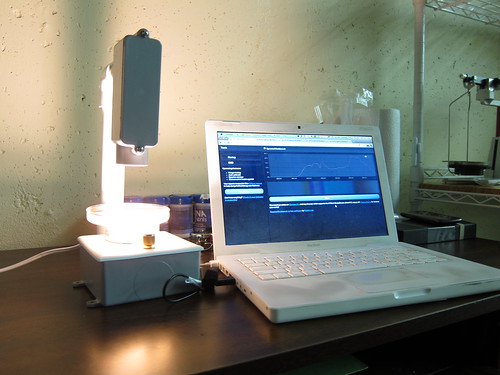 (Above, the "countertop" model available on Kickstarter)
(Above, the "countertop" model available on Kickstarter)
The hardware design of the spectrometer has progressed considerably and in pushing for so many people to build and use spectrometers, we're hoping to refocus efforts on building a shared, open source spectral library and developing easy, consistent, and rigorous techniques. In a sense, the project has progressed from an engineering problem to a science problem -- amongst the hundreds of Kickstarter backers, many are asking whether the device can be used for myriad applications, from agricultural testing of sulfur to blood or soil tests, to uses in astronomy or gemmology. I think it's great that people have so many ideas and questions -- that's the whole reason we're making this kit available, and it's a big step towards proving out different applications and methodologies.The science is really just beginning! For an overview of some of the suggested uses, see this wiki page on which we're starting to compile research: http://publiclaboratory.org/wiki/spectral-analysis
Though the many diverse uses might seem to distract from our original goal of detecting oil contamination, the open-endedness is intentional. We are, in a sense, gambling that by engaging so many new citizen scientists, the uses such as measuring grow lamps or laundry detergent dyes will help to refine and improve techniques which will benefit all uses, including pollution detection. Having a shared platform and standardized techniques, not to mention a whole community of burgeoning experts in spectral analysis, can't but help in bringing spectral analysis of pollution closer to reality.
We've made a few models of spectrometer available -- including a papercraft version for only $10 -- but the "countertop model" which comes in a nice enclosure with a dimmable lamp, is closest to the kind of device we imagine people will eventually put in their kitchen or garage, which restaurants or coffeeshops might have to test their products, or citizen scientists might use to quickly assess water or soil samples.
In that spirit, I've been visiting different spots around town to explore those kinds of everyday uses. Last week, I met up with Brian from Mystic Brewery, and we tried quantifying yeast in their propagator. A few days later, I visited Gus at Toscanini's in Central Square, Cambridge, and we scanned a variety of coffee drinks. Though this may sound like the nerdiest of foodie pursuits, I hope that we can inspire folks to learn about spectroscopy, a technique which today is available only to well-funded "experts" in university and industry labs.
Though our main goal is to make science tools available to non-scientists, there is much to be gained from attracting some scientists to our project as well. First, we've already relied on the contributions and advice of a variety of scientists in designing our tools -- from Public Lab contributors who work in spectral analysis to close examinations of NASA instruments like the CRISM spectrometer aboard the Mars Reconnaissance Orbiter. But the very real possibility that traditional scientists would be interested in instruments 1/1000 the price of what they are used to can only help our cause by comparing and contrasting our tool's data to that of commercial alternatives. If papers are published which cite the use of our tools, credibility will grow, as will bridges between the science world and the wider public -- we just have to be sure the tools are good enough.
Finally, the analysis software at SpectralWorkbench.org -- a kind of OpenStreetMap or Wikipedia of spectral data -- treats spectral analysis like a "big data" problem. Though we web developers are now accustomed to thinking this way about leveraging huge datasets, the idea of a truly gigantic, shared, open source spectral database opens up possibilities for analysis and, of course, matching. We're being a little optimistic when, in our Kickstarter, we talk about building a "SHAZAM for materials", but we really hope that our growing community of self-taught spectral analysis experts will someday be able to hold up a spectrometer-enabled smartphone, scan a water sample, and confidently identify a dangerous carcinogen.
Follow related tags:
spectrometer idealab


